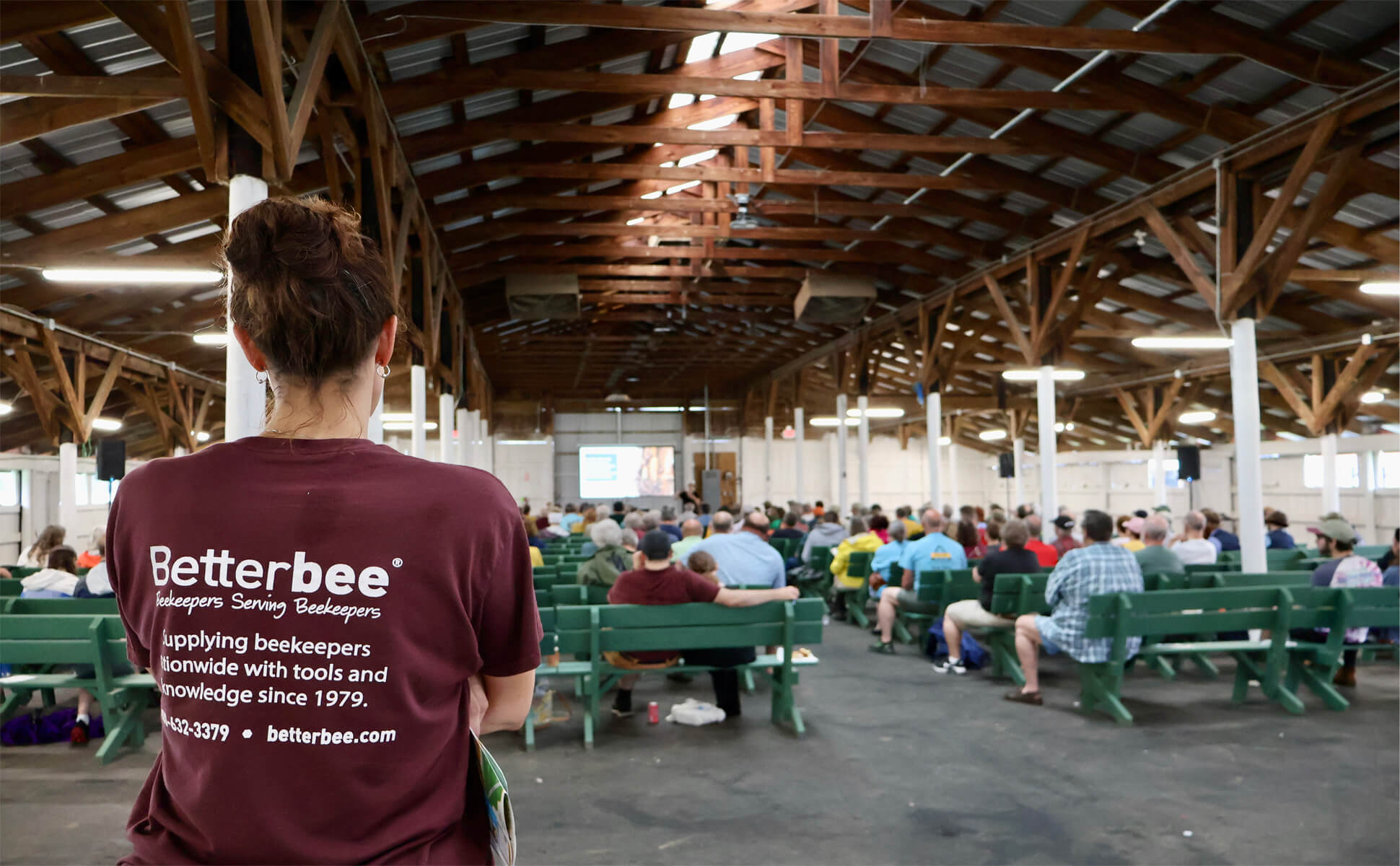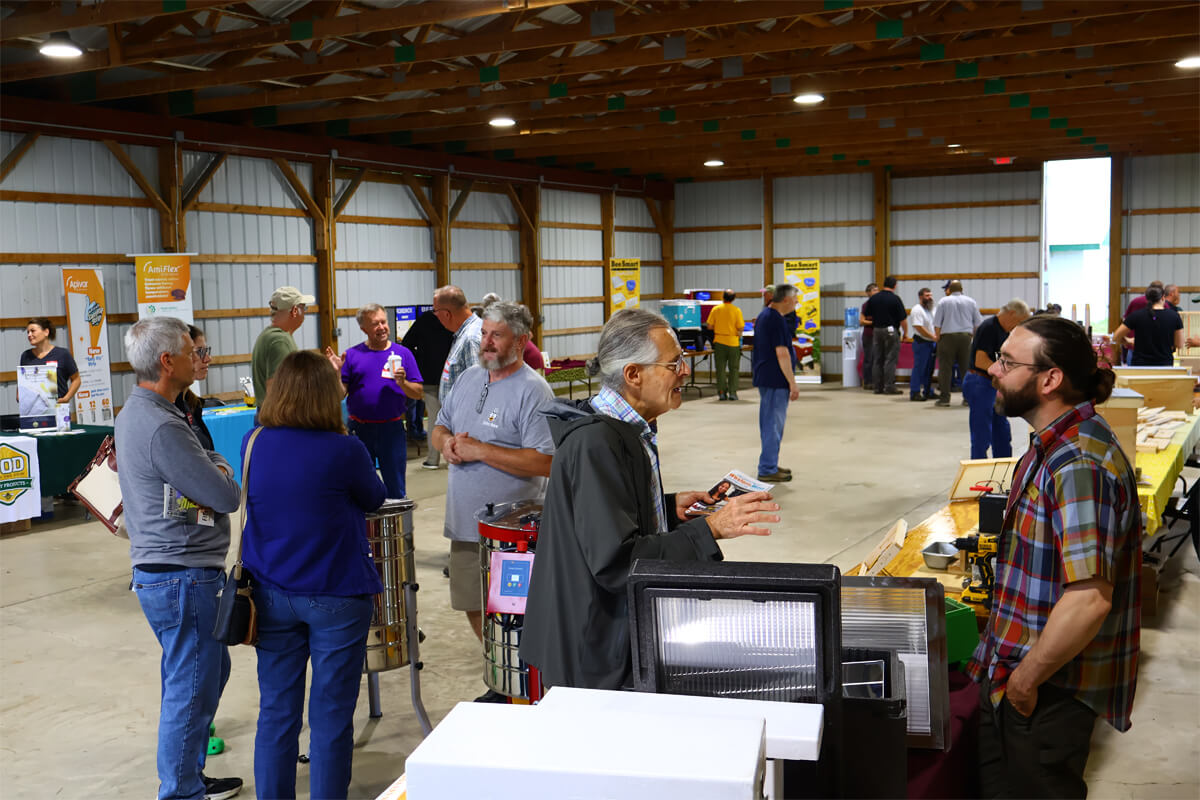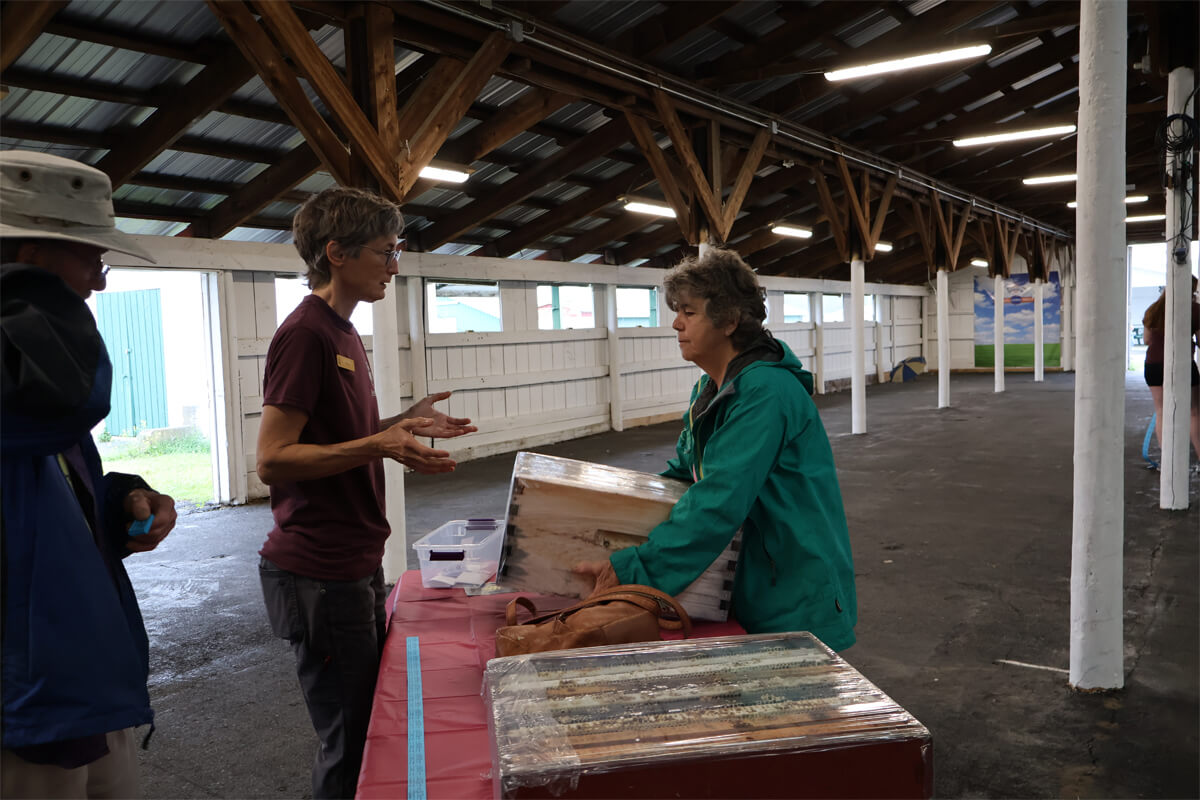We had a blast at our 19th Annual Betterbee Field Day. Thank you to everyone who came out in the pouring rain to participate in our event. Brand new this year, we had an entire barn dedicated to our vendors as well as Betterbee Bingo! We also had our familiar favorites, including raffles, guess the weight of the honey super, and delicious honey ice cream from Battenkill Creamery. Boy Scout Troop 6027 knocked it out of the park again this year with delicious lunch for all that attended.

Field Day attendees gather to listen to this year's speaker, Dr. Meghan Milbrath.
Lessons from experts in beekeeping
This year we were proud to welcome Dr. Meghan Milbrath, Assistant Professor in the Department of Entomology at Michigan State University, and owner of Sandhill Bees. Meghan is an academic specialist at Michigan State University, where she does honey bee and pollinator research, and is the coordinator of the Michigan Pollinator Initiative.
Her two talks, “Drawn Comb is Gold” and “Sustainable Northern Beekeeping Using Spring Nucs” gave both Betterbee staff and attendees valuable information on how to be better beekeepers. Her two lectures covered very different topics and combined her experience as a honey bee scientist with her experience as a beekeeper and entrepreneur.
We also had a lecture from our own Director of Research and Education, Dr. David Peck. He gave a short (but information-packed) presentation on the importance of keeping varroa mite levels low throughout the year, and not just trying to knock mite levels down low once a year before winter. As always, we at Betterbee find that mite control is the first step in keeping our colonies healthy, so we always make sure to emphasize the importance of varroa monitoring and management.
Drawn comb is gold
The first talk, “Drawn Comb is Gold”, highlighted just how valuable wax comb is to bees, and to beekeepers. She explained that 6-7 pounds of honey that are needed for bees to make just one pound of wax, and that working your bees deliberately to promote comb-building will pay dividends for years.
(And of course, we did appreciate that Dr. Milbrath mentioned our BetterComb as a quick alternative if you need comb but you can’t get your bees to build it right away!)
Sustainable northern beekeeping using spring nucs
In Dr. Milbrath’s second talk, she taught us all about how and why it’s a good beekeeping practice to make nucleus colonies each summer for use in correcting hives that are having issues in summer and fall, to repopulate hives whose colonies die during the winter, or just as nucs that you can grow into full-sized colonies the following spring. She highlighted that you can lose a lot of money buying bees every single year, but that you can actually make money if you can sell a few spare nucs each spring.
Clubs and vendors shared their knowledge

Customers talking to vendors in our new vendor barn!
We had representatives from regional and state bee clubs, and even a booth from the Eastern Apicultural Society, whose territory covers most of the eastern states in the U.S.
We also invited some of our favorite vendors: Humble Abodes, BeeSmart Designs, Herman from Hogg Halfcomb, NOD Apiaries with Formic Pro, and Veto Pharma with Apivar strips.
The fun part about our Field Day is that since no one is there to sell products, you get to just learn about how things work and ask the experts questions about the best ways to treat your mites or modify your hive equipment for particular purposes you have in mind. The hardest part about having such an educational “vendor barn” is that we struggled to get people back in their seats for the next great lecture!
Breakout sessions with the Betterbee team
The rain forced us to be creative and hold breakout sessions indoors. The fabulous Mel Sandbrook had a session on candlemaking and decorating. Dr. Milbrath took questions from attendees. Anne Frey taught queen marking in her hands-on session. Dr. Peck how and why someone would use an observation hive. Dr. Chris Cripps showed how to light a smoker. Even though we weren’t out in the hives, everyone had a good time and kept learning right up until the end of the day.
Guess the weight
As in previous years, we also held our Guess The Super Weight contest, where contestants lifted a partially filled medium super and a partially filled deep super, and then guessed the combined weight of all of the honey, wax, and wood. The closest guessers won gift certificates, and all of the numbers were saved and are waiting for us to tabulate them again to update last year's article on the “Wisdom of Crowds”. Check it out if you didn’t read it last year, and see how close the average guess was to the correct combined super weight!

One of the attendees attempting to guess the weight of the honey super!



